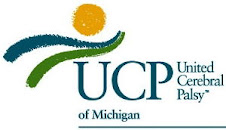Purpose of the project.
People with developmental disabilities will develop powerful voices. They will learn to use pictures and words to share their own stories.
Their stories will focus on advocacy issues from a personal standpoint. Policy makers and communities will see life through the eyes of people with disabilities.
“Life in Focus” group activities. Group members:
- Get a camera and learn how to use it.
- Take pictures to represent issues and experiences in their daily lives.
- Discuss their photos and stories in a group.
- Learn to use the photos and stories to communicate with people in their lives, policy makers, and the community.
- 5 groups have been completed. (Capital People First, Resource One Petoskey, Branch, Manistee, and Benzie)
- 5 training groups are meeting on a continuing basis. They are the groups in Baraga, Ontonagon, Manistee and Benzie Counties, plus 2 Resource One groups.
- 13 sponsors were trained to carry out groups (those just listed, plus Lansing Transitions, JVS in Detroit, Grand Rapids, Berrien, Livingston,)
The complete training package is now available at project’s website, at:
https://sites.google.com/site/lifeinfocusgroups/home/materials
A total of 110 people were trained
- 72 through Life in Focus groups, who received the full training, with 5 or more photo story circle group meetings.
- 22 in Train the Trainer sessions, who were not part of the full Life in Focus training.
- 16 trained to use cameras, who were not part of the full Life in Focus training.
- Average of 10 sessions per site.
- Several people used the training as part of their Person Centered Planning. One person used photos to emphasize that she wanted to move into her own apartment, a goal which she achieved. Another person bought a house.
- The Manistee-Benzie groups specifically focused advocacy efforts on accessibility of buildings, and has secured improvements at various locations in the community.
- Some members of the Manistee-Benzie groups have shown significant increase in their communication skills. A couple people have started talking more, and others are using their ASL skills much more to communicate.
- People bought their own cameras after using a borrowed one during the training. Others received cameras as Christmas presents. Some have turned photography into a major hobby and take many pictures.
- The Branch County group made photo albums to give to people in their programs who were moving away.
- Resource One members made a speech at the Capitol for the “Walk a Mile” rally and used photos when meeting with legislative staff.
- 3 groups have expanded on their original groups by starting new groups in other places or with new participants. Since the Capital Area People First group training, the school transitions programs have added the Life in Focus training to their transition curriculum and conducted new groups each year. The Resource One people originally trained in Petoskey started new groups in Alpena and Cheboygan. And the Baraga Photography Club helped start another club in Ontonagon.
- People in Branch, Ingham, Manistee and Benzie Counties learned to use their photos to create PowerPoint presentations for advocacy.
- The Resource One and Branch County groups created major displays using their photos. Resource One used their displays at over 20 locations throughout northern Michigan. They made presentations to CMH boards and other agencies, and at the Peer Support Conference and Consumer Conference.
According to reports from the local sites, the following results for participants and system change were achieved for people who went through the full Life in Focus training.
Of the 72 participants in the full training groups:
96% Successfully learned to use a camera, with supports
8% Used technology to assist with communication / mobility
10% Used other accommodations
46% Have improved services as a result of project
28% Personal choice increased
75% New friends, social or recreation activities
57% Increased Civic Participation
82% Other improvements in life (confidence, communication)
74% Are active in systems advocacy
56% Made presentations to policymakers
2 People got membership on public or private bodies
Taken all together, the project exceeded its goals.


No comments:
Post a Comment